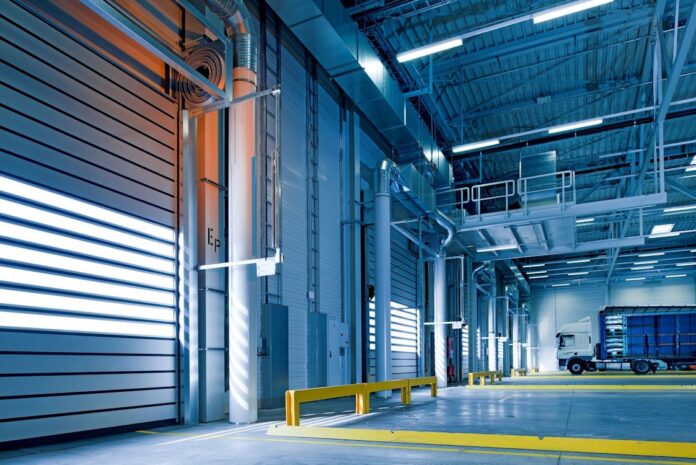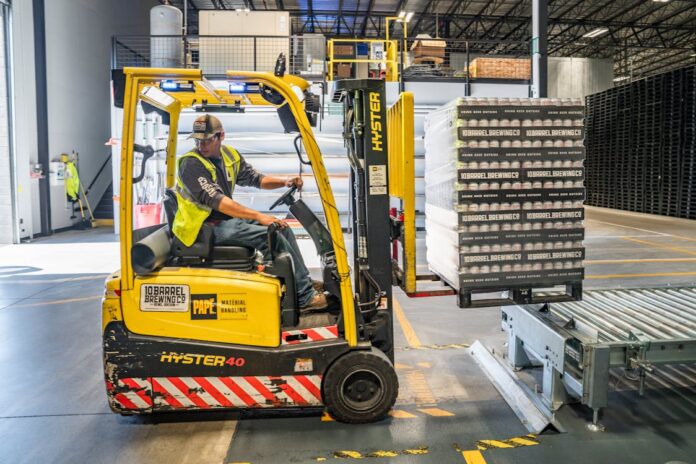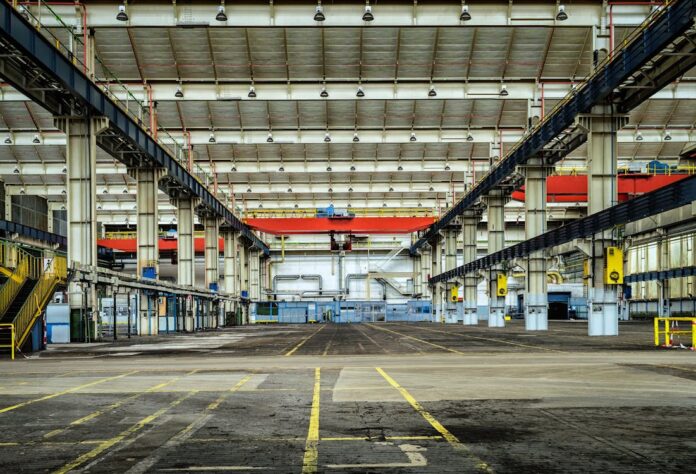Effective warehouse management is vital for businesses that rely on efficient storage and handling to meet customer demands. A well-organized warehouse reduces operational costs, improves productivity, and ensures timely delivery of products. However, achieving optimal warehouse operations can be challenging.
This article provides solutions to optimize your warehouse for better storage and handling, ensuring your business runs smoothly and efficiently. For further help, check out https://lenokers.com.
Designing an Efficient Warehouse Layout

The layout of a warehouse plays a crucial role in optimizing operations. A well-planned layout minimizes the distance products need to travel, reduces bottlenecks, and improves workflow efficiency.
- Analyze Your Current Layout: Start by assessing your current warehouse layout. Identify areas where congestion occurs, and analyze the flow of goods from receiving to shipping. This will help you understand where improvements are needed.
- Classify Your Inventory: Group products based on their size, weight, and frequency of use. High-demand items should be stored in easily accessible areas, while slower-moving products can be placed in less convenient locations.
- Create Zones: Divide your warehouse into specific zones, such as receiving, storage, picking, packing, and shipping. Clearly defined zones reduce confusion and streamline operations.
- Implement Cross-Docking: Cross-docking involves transferring products directly from receiving to shipping with minimal storage time. This method reduces handling and storage costs while speeding up delivery times.
- Utilize Vertical Space: Maximize storage by using vertical space. Install tall racks or shelving units to store products without expanding the warehouse footprint. Consider implementing automated storage and retrieval systems (AS/RS) for efficient vertical storage management.
- Optimize Aisle Widths: Ensure that aisles are wide enough for safe and efficient movement of forklifts and other equipment. However, avoid excessively wide aisles that waste valuable storage space.
- Incorporate Flow Racks and Conveyor Systems: Flow racks and conveyors help in the automated movement of products, reducing manual handling and speeding up order processing.
Implementing Effective Inventory Management Systems

Proper inventory management is essential for warehouse optimization. Accurate inventory tracking ensures that products are available when needed, reducing stockouts and excess inventory.
- Adopt a Warehouse Management System (WMS): A WMS is software that automates and streamlines inventory management processes. It provides real-time visibility into stock levels, tracks inventory movement, and optimizes order picking.
- Use Barcode and RFID Technology: Barcodes and RFID (Radio Frequency Identification) tags allow for accurate and efficient tracking of inventory. These technologies reduce manual data entry errors and speed up inventory counts.
- Implement ABC Analysis: ABC analysis categorizes inventory into three groups: A (high-value, low-quantity), B (moderate value and quantity), and C (low-value, high-quantity). Focus on managing A and B items more closely, as they have a greater impact on your business.
- Practice Just-In-Time (JIT) Inventory: JIT inventory management involves receiving goods only when needed for production or order fulfillment. This approach reduces the need for large storage spaces and minimizes the risk of overstocking.
- Regularly Audit Inventory: Conduct regular inventory audits to reconcile physical stock with records. This helps identify discrepancies early and prevents stockouts or excess inventory.
- Utilize Inventory Forecasting: Leverage historical sales data and predictive analytics to forecast future demand accurately. This allows you to adjust inventory levels proactively, ensuring products are available without overstocking.
Enhancing Material Handling Efficiency

Material handling is a critical aspect of warehouse operations. Efficient handling reduces labor costs, minimizes product damage, and speeds up order fulfillment.
- Choose the Right Equipment: Invest in equipment suited to your warehouse’s specific needs. This may include forklifts, pallet jacks, conveyors, and automated guided vehicles (AGVs). Ensure equipment is regularly maintained to prevent breakdowns and delays.
Implement Ergonomic Solutions: Ergonomically designed workstations, lifting devices, and tools reduce worker fatigue and injury. This leads to higher productivity and lower absenteeism. - Automate Repetitive Tasks: Automation can significantly enhance material handling efficiency. Consider using automated palletizers, stretch wrappers, and sorting systems to handle repetitive tasks, freeing up workers for more complex activities.
Train Employees: Proper training ensures that employees operate equipment safely and efficiently. Regular training updates keep workers informed about new technologies and best practices. - Optimize Pick Paths: Design picking routes that minimize travel time and distance. Batch picking, zone picking, and wave picking are strategies that can be employed based on order volume and warehouse size.
- Reduce Handling Touchpoints: Minimize the number of times a product is handled to reduce the risk of damage and delays. Streamlining processes like receiving, picking, packing, and shipping can help achieve this goal.
- Leveraging Technology for Warehouse Optimization: The integration of technology is essential for modern warehouse optimization. Advanced systems and tools can automate processes, provide real-time data, and improve decision-making.
- Warehouse Management System (WMS): A WMS is central to optimizing warehouse operations. It integrates with other systems like Enterprise Resource Planning (ERP) and Customer Relationship Management (CRM) to provide a holistic view of inventory, orders, and shipments.
- Automated Storage and Retrieval Systems (AS/RS): AS/RS use robotic systems to store and retrieve products from high-density storage areas. This technology maximizes storage space and reduces the time spent locating items.
- Internet of Things (IoT): IoT devices, such as sensors and smart shelves, provide real-time data on inventory levels, temperature, humidity, and equipment status. This information helps in maintaining optimal storage conditions and preventing equipment failures.
- Artificial Intelligence (AI) and Machine Learning: AI and machine learning algorithms can predict demand, optimize inventory levels, and improve order picking accuracy. These technologies can also identify patterns and anomalies, enabling proactive decision-making.
- Drones and Autonomous Vehicles: Drones can be used for inventory counts and monitoring warehouse conditions, while autonomous vehicles can transport goods within the warehouse. Both technologies reduce manual labor and speed up operations.
- Mobile Devices and Apps: Equipping workers with mobile devices and apps allows for real-time access to inventory data, order information, and task assignments. This enhances communication and reduces delays.
Ensuring Safety and Compliance
Safety is paramount in any warehouse. Implementing safety measures not only protects employees but also ensures compliance with regulations and prevents costly accidents.
- Conduct Regular Safety Audits: Regularly inspect the warehouse for potential hazards, such as uneven flooring, poor lighting, or blocked exits. Address any issues immediately to prevent accidents.
- Provide Safety Training: Employees should receive ongoing training on safety protocols, equipment operation, and emergency procedures. This helps create a safety-conscious culture within the warehouse.
- Use Personal Protective Equipment (PPE): Ensure that employees have access to and wear the appropriate PPE, such as gloves, helmets, and high-visibility vests. PPE reduces the risk of injury from accidents.
- Implement Clear Signage: Use clear signage to indicate hazardous areas, emergency exits, and equipment operating zones. This helps prevent accidents and ensures that employees can quickly find safety equipment and exits.
- Maintain Equipment Properly: Regular maintenance of equipment, such as forklifts and conveyors, reduces the risk of malfunction and accidents. Keep maintenance records up to date and follow the manufacturer’s recommendations for service intervals.
- Follow OSHA Guidelines: Adhere to Occupational Safety and Health Administration (OSHA) guidelines for warehouse safety. Compliance with these regulations ensures a safe working environment and prevents legal issues.
Conclusion
Optimizing your warehouse for better storage and handling is crucial for maintaining efficient operations and staying competitive in today’s fast-paced business environment.









